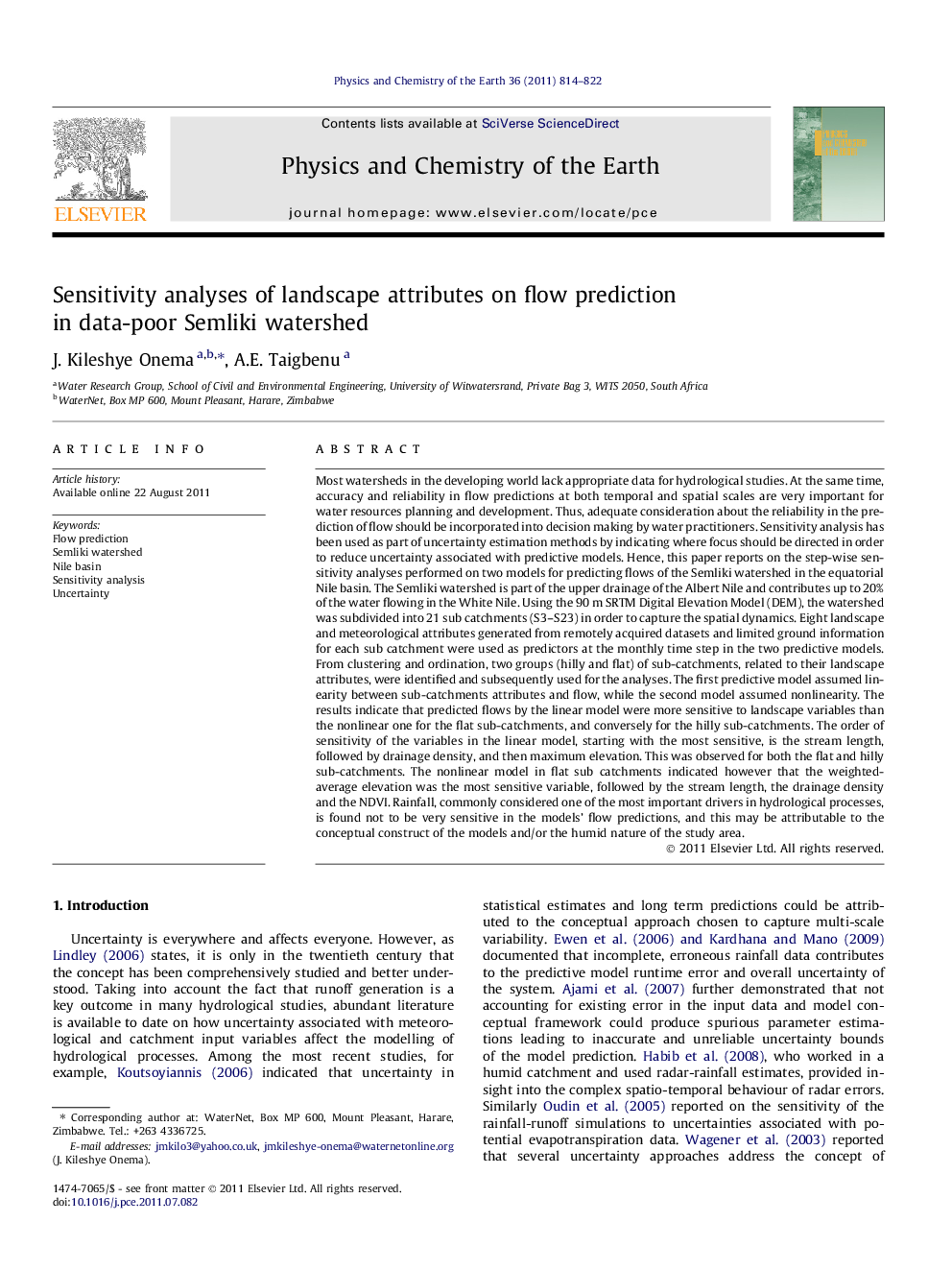| Article ID | Journal | Published Year | Pages | File Type |
|---|---|---|---|---|
| 4721295 | Physics and Chemistry of the Earth, Parts A/B/C | 2011 | 9 Pages |
Most watersheds in the developing world lack appropriate data for hydrological studies. At the same time, accuracy and reliability in flow predictions at both temporal and spatial scales are very important for water resources planning and development. Thus, adequate consideration about the reliability in the prediction of flow should be incorporated into decision making by water practitioners. Sensitivity analysis has been used as part of uncertainty estimation methods by indicating where focus should be directed in order to reduce uncertainty associated with predictive models. Hence, this paper reports on the step-wise sensitivity analyses performed on two models for predicting flows of the Semliki watershed in the equatorial Nile basin. The Semliki watershed is part of the upper drainage of the Albert Nile and contributes up to 20% of the water flowing in the White Nile. Using the 90 m SRTM Digital Elevation Model (DEM), the watershed was subdivided into 21 sub catchments (S3–S23) in order to capture the spatial dynamics. Eight landscape and meteorological attributes generated from remotely acquired datasets and limited ground information for each sub catchment were used as predictors at the monthly time step in the two predictive models. From clustering and ordination, two groups (hilly and flat) of sub-catchments, related to their landscape attributes, were identified and subsequently used for the analyses. The first predictive model assumed linearity between sub-catchments attributes and flow, while the second model assumed nonlinearity. The results indicate that predicted flows by the linear model were more sensitive to landscape variables than the nonlinear one for the flat sub-catchments, and conversely for the hilly sub-catchments. The order of sensitivity of the variables in the linear model, starting with the most sensitive, is the stream length, followed by drainage density, and then maximum elevation. This was observed for both the flat and hilly sub-catchments. The nonlinear model in flat sub catchments indicated however that the weighted-average elevation was the most sensitive variable, followed by the stream length, the drainage density and the NDVI. Rainfall, commonly considered one of the most important drivers in hydrological processes, is found not to be very sensitive in the models’ flow predictions, and this may be attributable to the conceptual construct of the models and/or the humid nature of the study area.
► Sensitivity analysis of two predictive models developed from landscape and meteorological variables was conducted. ► The data-poor Semliki catchment of the Nile basin in the Central African region is the study area. ► Variables with the most influence on the stream flow prediction were identified. ► The approach holds potential for the evaluation of the impact of the input variables by water practitioners and planners.
